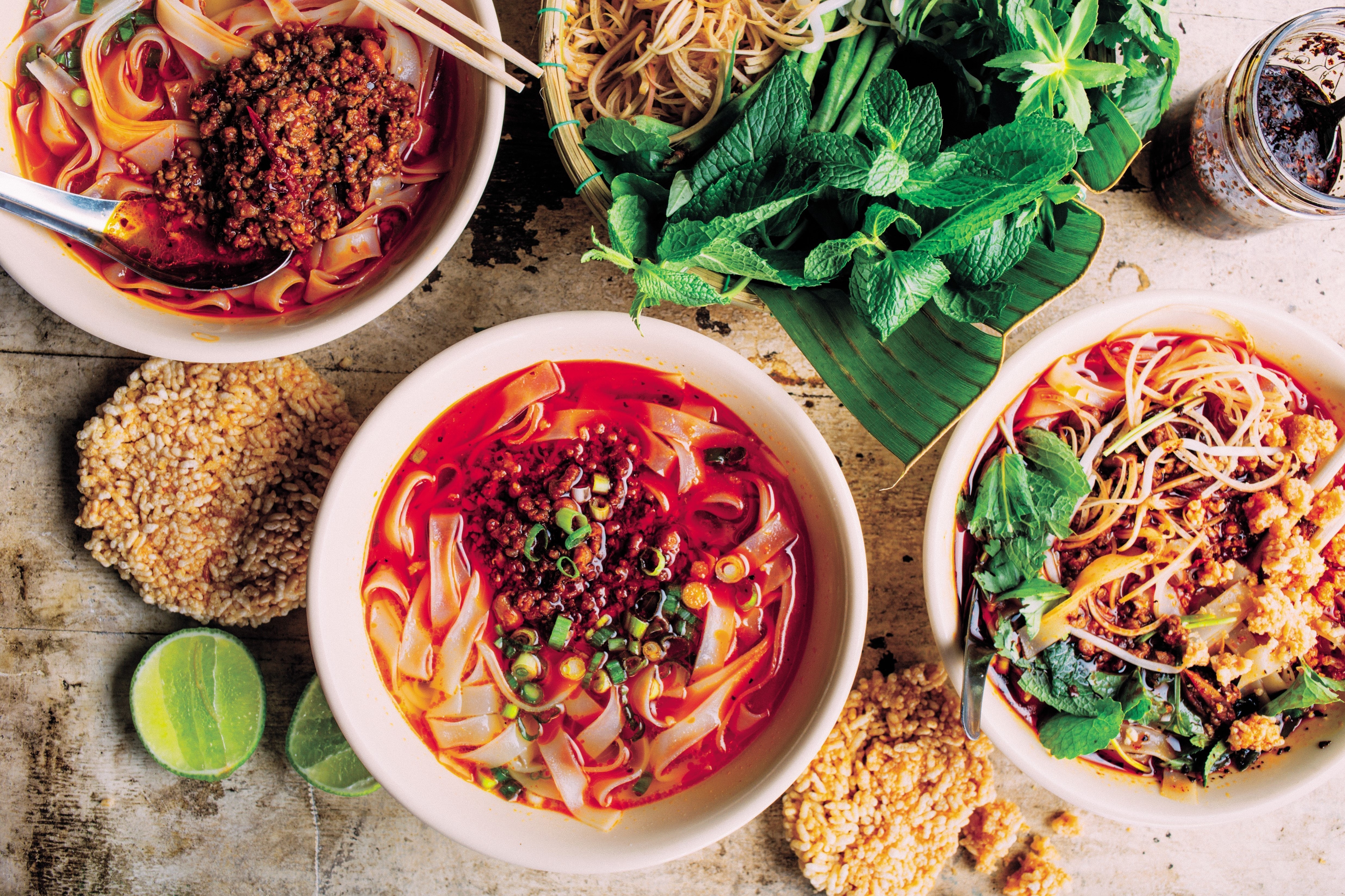Introduction: Laotian cuisine
Laotian cuisine, also known as Lao cuisine, is a unique blend of flavors and ingredients that reflect the country’s geography and cultural influences. It is characterized by its use of fresh herbs, vegetables, and spices, as well as its emphasis on simplicity and balance. Laotian cuisine features a wide range of dishes and flavors, from spicy soups and stews to fragrant curries and grilled meats.
Traditional Laotian desserts
Traditional Laotian desserts are typically simple and made from locally available ingredients. One popular dessert is khao tom, which consists of sweet sticky rice cooked with coconut milk and sugar, wrapped in banana leaves, and steamed. Another traditional dessert is khanom krok, a sweet coconut pudding made with rice flour, coconut milk, and sugar, cooked in a special cast iron pan.
Sticky rice desserts in Laos
Sticky rice is a staple food in Laos and is often used in desserts. One classic sticky rice dessert is mango sticky rice, which consists of sweet sticky rice topped with ripe mango slices and drizzled with coconut cream. Another popular sticky rice dessert is khao niew ma muang, which is similar to mango sticky rice but features sweetened coconut milk and fried mung beans as toppings.
Popular Laotian sweet snacks
Laotian cuisine offers a wide variety of sweet snacks, including khanom chak, a sweet and chewy coconut cake made with rice flour and coconut milk. Another popular snack is nom vang, which are sweet egg rolls filled with coconut, sesame, and peanuts. Laotians also enjoy munching on khanom kok, bite-sized coconut cakes that are crispy on the outside and soft on the inside.
Sweet and savory flavors in Laotian cuisine
Laotian cuisine is known for its balance of sweet, salty, sour, and spicy flavors. This balance is evident in many Laotian desserts and sweets, which often feature a combination of sweet and savory flavors. For example, laap maak tua, a savory minced meat salad, is often served with a side of sweet and sticky rice.
Influence of neighboring countries on Laotian sweets
Laotian cuisine has been heavily influenced by the neighboring countries of Thailand, Vietnam, and China. This influence is evident in many Laotian sweets, which feature ingredients and techniques borrowed from these countries. For example, the khanom jeeb dumplings, filled with pork and shrimp, are a popular Laotian snack that is believed to have originated in China. Another sweet that has been influenced by Thailand is the sticky rice and mango dessert, which is now a popular dish throughout Southeast Asia.
In conclusion, Laotian cuisine may not be as well-known as its Thai and Vietnamese counterparts, but it offers a unique and delicious array of desserts and sweets. From sticky rice desserts to savory snacks, Laotian sweets showcase the country’s love for fresh ingredients and balance of flavors. Whether you are a fan of sweet or savory dishes, there is something for everyone to enjoy in Laotian cuisine.

